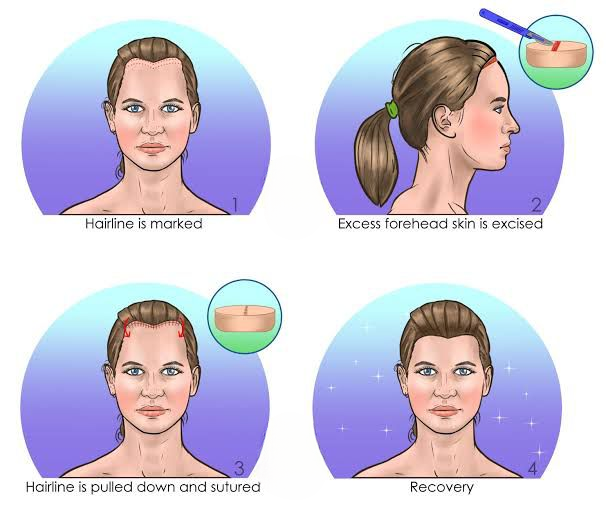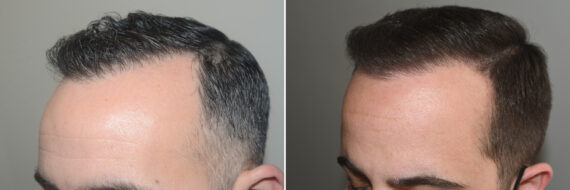(FAQs) about Forehead Reduction?
Forehead reduction surgery is typically performed under local anesthesia with sedation or general anesthesia. The surgeon makes an incision along the existing hairline, removes a strip of scalp, and repositions the hairline to a lower position on the forehead. The incision is then closed with sutures, and dressings are applied to the surgical site.
Recovery after forehead reduction surgery involves swelling, bruising, and discomfort around the forehead and scalp, which can be managed with pain medication and cold compresses. Patients are advised to keep their head elevated and avoid strenuous activities during the initial recovery period. It may take several weeks for swelling to fully subside and the final results to become apparent.
Like any surgical procedure, forehead reduction surgery carries risks such as infection, bleeding, scarring, and changes in sensation. There is also a risk of hair loss along the incision line, although this is typically temporary. It’s essential for individuals considering this procedure to thoroughly discuss the potential risks and benefits with their surgeon.
The results of forehead reduction surgery are typically long-lasting, providing a permanent reduction in forehead height. However, individual results may vary based on factors such as genetics, aging, and lifestyle habits.
Non-surgical alternatives to forehead reduction surgery include hairstyling techniques, such as bangs or hairstyles that minimize the appearance of a high forehead. However, these methods only provide temporary improvement and do not address the underlying cause of forehead height.










